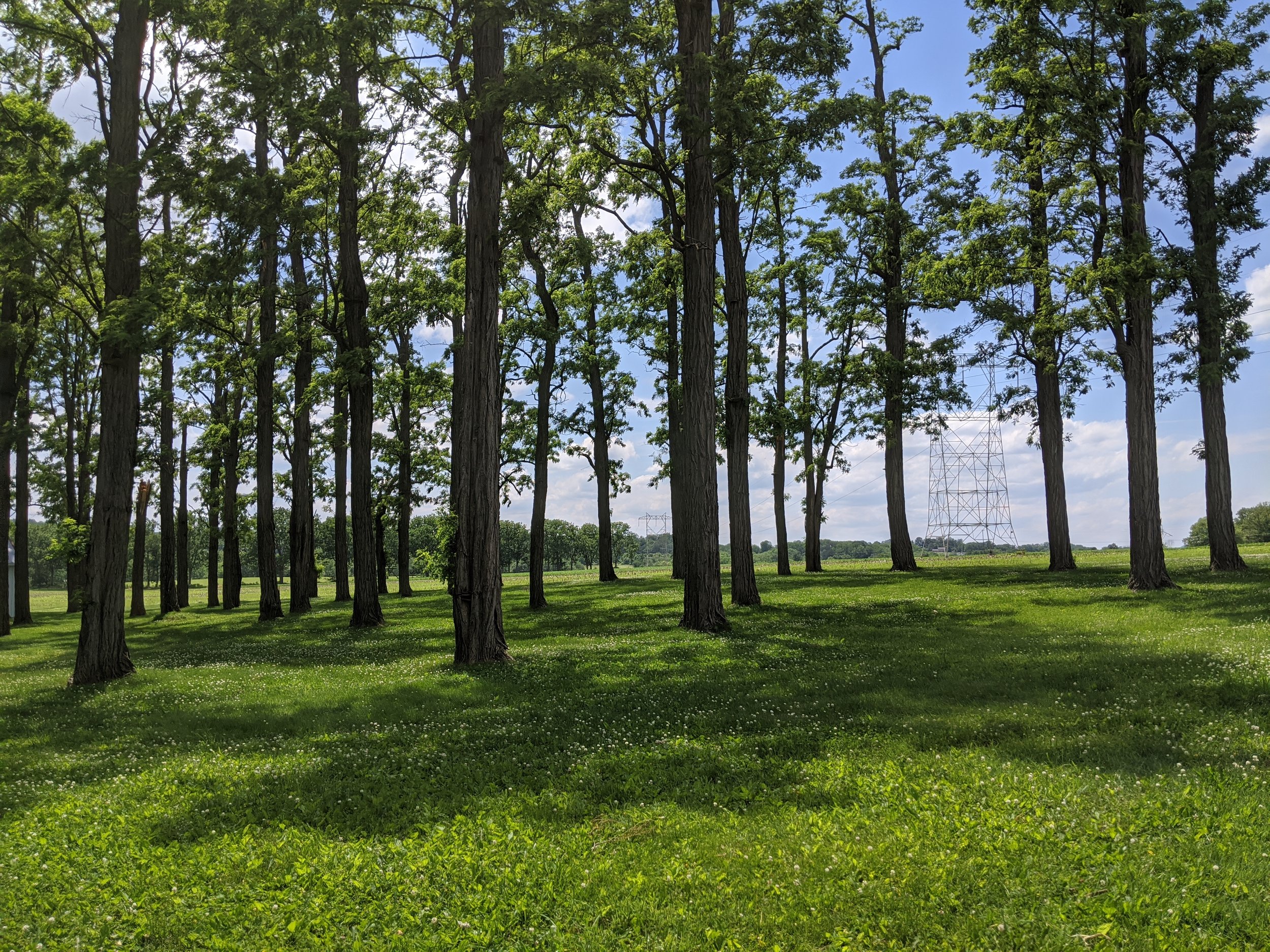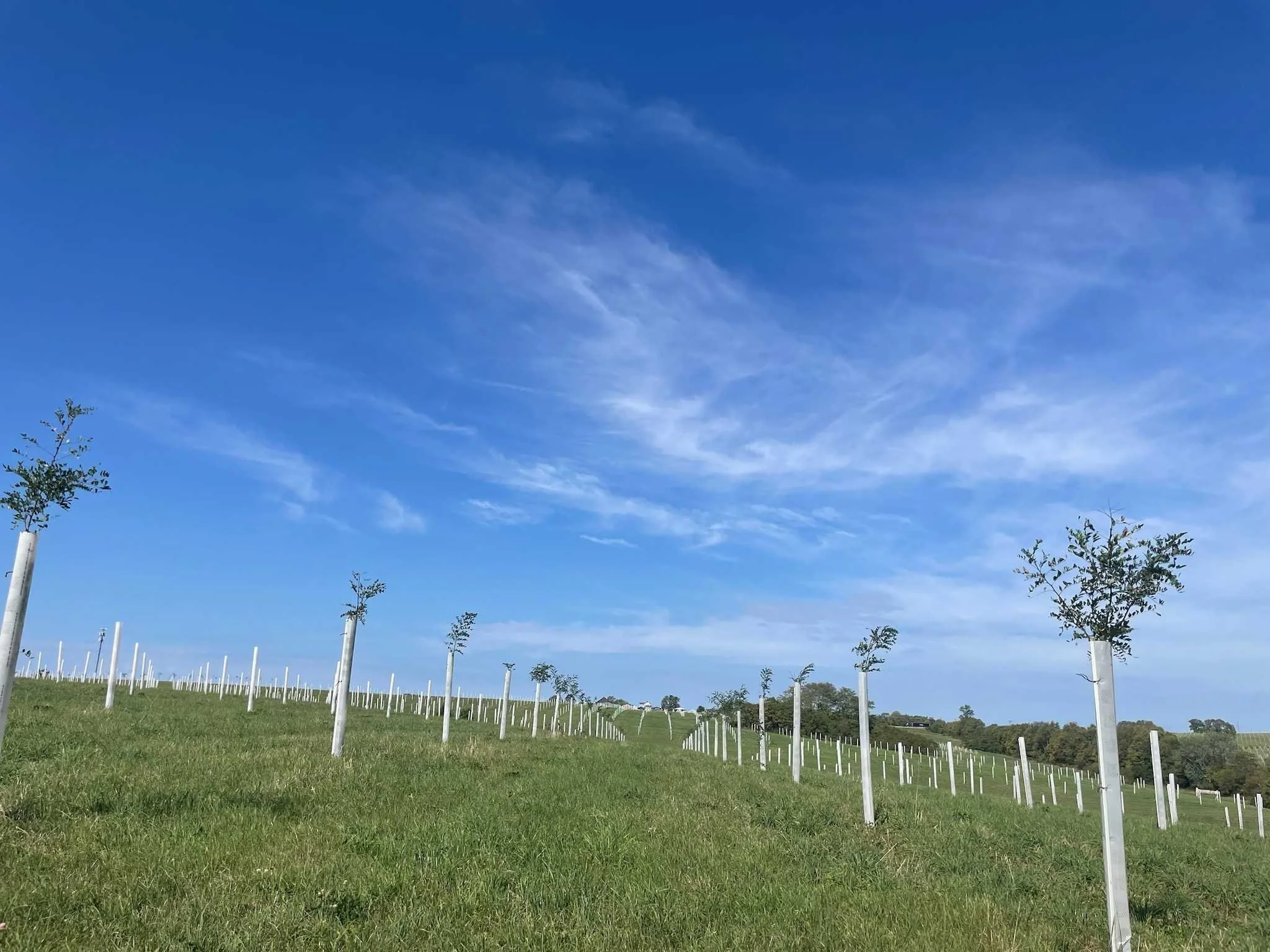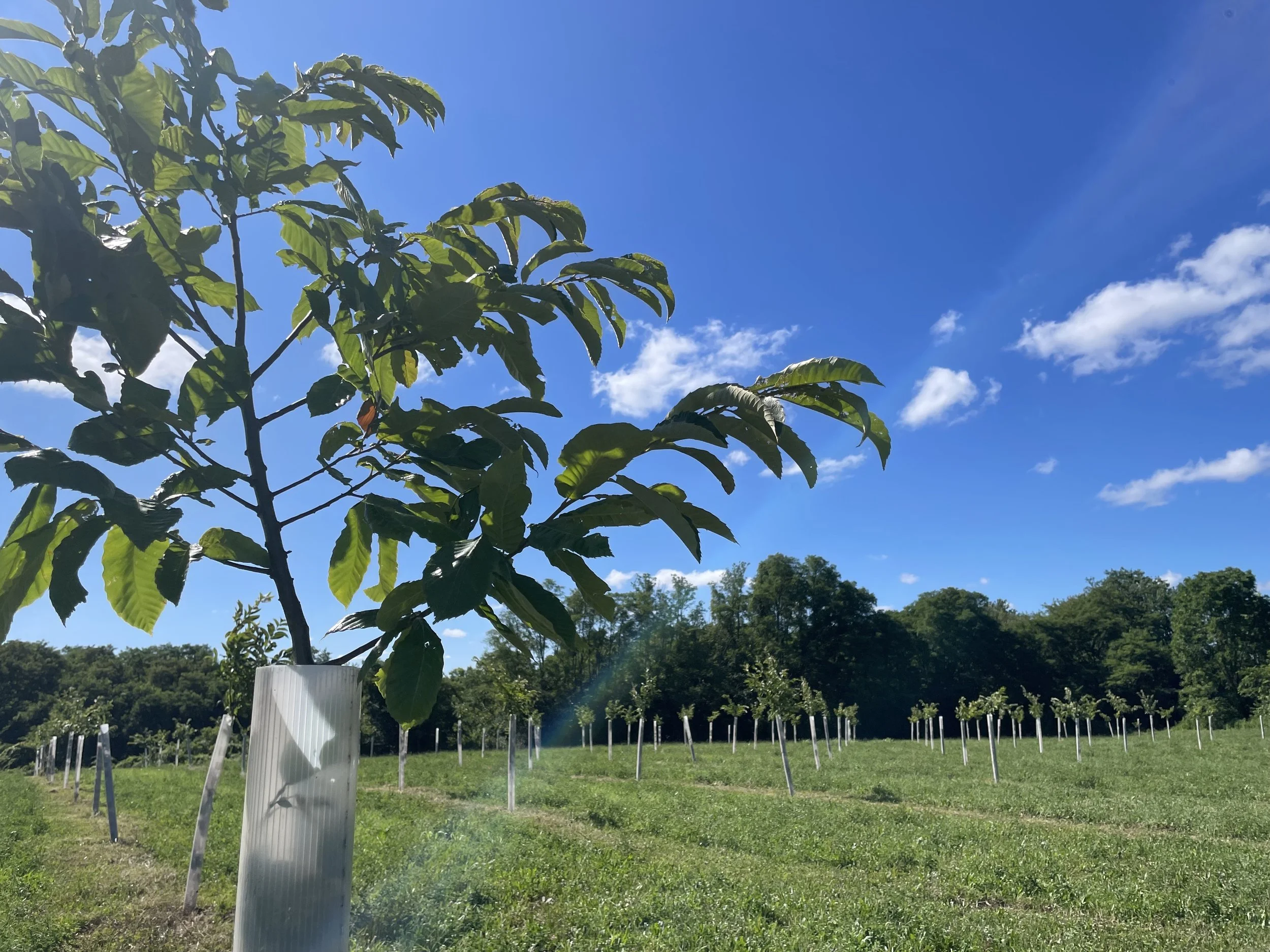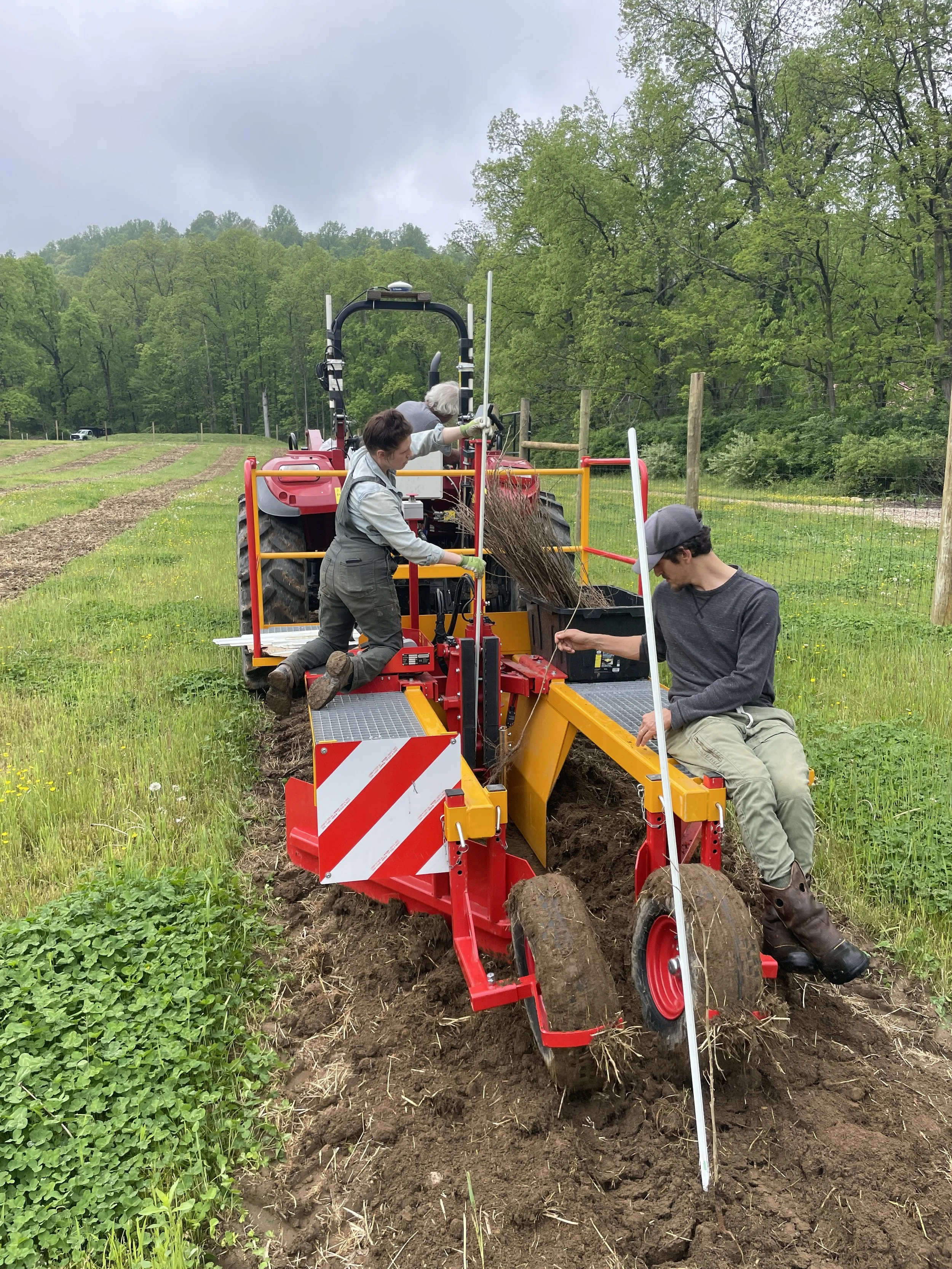
Tree Procurement for Agroforestry
Plant with Proven Genetics
Tree procurement involves careful selection of the right species for your land based on your farm’s context and goals. We’ll outline the challenges that can come with procurement, and share stories of the impact high-quality procurement can have on a project.
How We Make Procurement Easy
Propagate is in a unique position to help navigate these challenges with a combination of suitability tools in our design software (Overyield), silviculture knowledge, regional partnerships, and economies of scale.
Our team simplifies procurement logistics, ensuring the best planting, survivorship & vigor outcomes with:
Inputs & genetics supply chain handling
Hand or mechanical planting
Tree tubes, vole guards, & weed matting
Root drenches and foliar sprays
Why Procurement Can be Challenging
Nursery Stock & Genetics
It’s important to choose healthy, high-quality trees suited to your climate and soil. Consider tree genetics that can withstand a wide range of weather events like flooding or drought, and shifting dynamics of pests and pathogens — while also yielding consistent, commercial quality products. A trend towards high mortality rates in tree plantings globally speaks to a need for improved tree genetics, which can be challenging for those unfamiliar with silviculture.
Availability and Timing
Procuring high-quality trees in your desired quantity and at the right time can be difficult. Trees must be planted in specific seasons (usually fall or spring), so delays in procurement can mean waiting another year to establish them.
Logistics & Transportation
Finding suppliers who can reliably transport trees without damage adds another layer of complexity. Depending on the size of your project, local or regional supply constraints may exist.
Establishment and Initial Care
Even after successful sourcing and shipping, your trees will require careful maintenance (particularly in the early years) which can be labor-intensive and costly to get wrong. Our projects to date have a 91% survival rate. This is a product of our careful attention to tree genetics and nursery stock quality across a variety of emerging agroforestry crops. Our projects have a minimum survival rate guarantee of 80% depending on the species and practices selected.

Customer Stories
Black Locust: Bred for Resilience, Stress-Tested for Success
Well-suited for silvopasture, riparian plantings, timber and afforestation projects, black locust is a native species whose fast growth rates, upright growth habit, and floral resources offer a variety of benefits. These include nitrogen fixation to support adjacent crops, rapid carbon sequestration, habitat provision for native biodiversity, dappled shade for livestock, and low-input, high-optionality timber.
Most notably, Propagate’s exclusive access to elite black locust genetics — the Turbo-Obelisk group, bred in Hungary by our partners at Silvanus Forestry for stress tolerance and its exceptional growth habit — gives our customers a leg up over climatic extremes such as drought.
Black Locust at Hill Farms in Maysville, KY
Propagate’s Farm Services team has planted over 10,000 black locust trees, both as a biodiversity species and across our “incremental acreage”— land that is otherwise ill-suited for commercial crops, be it due to excessive drainage, flooding, or legacy soil health issues.
In the face of a statewide Level-1 drought issued for Kentucky, which represents moderate to severe stress, black locust from our Turbo-Obelisk group outperformed all other species on this marginal acreage. Although black locust is already drought tolerant, the Turbo-Obelisk group in particular requires only 300mm or 12 inches of rain per year to grow well, compared to conservation grade varieties, which either die or remain shrublike below this threshold (Silvanus forestry; USDA).
Black Locust at Cold Spring Farms in Oswego, NY
Throughout the Eastern US, Propagate has planted 13,000 black locust stems in total, representing a range of genetics from Conservation Grade to Turbo-Obelisk. For customers like Ben Lennon in Oswego, NY, the Daybreak variety made sense. As an improved cultivar with faster growth rates and straighter morphology, Daybreak offered Ben a way to drive down management costs and replanting needs in the short-term, as well as a strong option to increase carbon sequestration and carbon revenues in the long-run.

I was really impressed with the improved variety, which was already poking out of the tree tubes after planting
“
— Ben Lennon, Cold Spring Farms
Nut Crops in the Temperate Northeast
Bringing Industry Advancements to our Customers
Large-scale agroforestry adoption requires cooperation with industry actors working at all levels of tree crop improvement — from nursery suppliers and laboratory partners to breeders and farmers. Our genetic and nursery partnerships with breeders such as Missouri’s Center for Agroforestry, Rutgers University, and Route 9 Cooperative, as well as nursery suppliers like Native Forest Nursery and Wintergreen Tree Farm, have allowed us to provide our customers with large volumes of seedlings and clones that possess a balance of important traits: stress tolerance, nut quality, and high yields across key agroforestry species.
Chinese Chestnut
Chestnuts are emerging as one of the most popular agroforestry species for the temperate Northeast, offering a wide range of benefits to growers. They are highly profitable, tolerant of abiotic and biotic stressors, productive on marginal soils, and ecologically beneficial, helping stabilize soil, sequester carbon, and provide habitat and floral resources to support local biodiversity. Though the the large-scale adoption of chestnuts was, until recently, limited by gaps in R&D and farmer awareness, the culmination of 60 years of on-farm selection and university trials beginning in the late 90’s breeding for disease resistance and commercializable traits has enabled the scaling-up of chestnut agroforestry across the US.
Unlike many orchard crops, which are planted as clones, the vast majority of chestnuts planted today are seedlings — the progeny of grafted trees whose selection has involved decades of on-farm research. Across our Ohio and Kentucky acreage, we have planted 14 different varieties and evaluated vigor for over 11k+ seedlings. Of these cultivars, a select handful have emerged as our top-performers, growing well in the face of climate stresses like historic droughts and late frost events. These include Ohio Select, Qing, Empire Elite, and UMCA® PQK, which are now available for purchase from our web store.
Hazelnuts
Like chestnuts, hazelnut production in the temperate Northeast is still in its infancy, but the development of disease-resistant, commercially-viable cultivars is catalyzing its adoption in agroforestry systems.
Strong market demand already exists for the crop, which is largely driving efforts to improve the species. The primary challenge for hazelnut growers is Eastern Filbert Blight, though decades of R&D led by Rutgers University’s has led to the release of several cultivars that are resistant to EFB. We’ve worked to help procure and plant out these trees for innovative growers looking to plant the best of what’s available on the market.

Propagate helped us land on Rutger’s Hazelnuts, which are self-shedding, regionally-bred, and shelf-stable. The cultivar has only been commercially available for a few seasons, so we’re kind of on the forefront of their production.
“
— Ben Davies, Wild Fox Farm
How to Get Started
Retail
Buy top tier genetics of select species at affordable prices. We’re able to offer these prices by forward contracting with nursery partners, passing the savings on to our customers.
Custom procurement
We analyze your site’s climate, soils, resource availability, and production goals, then source genetics that will thrive in your context from our trusted supplier network.









